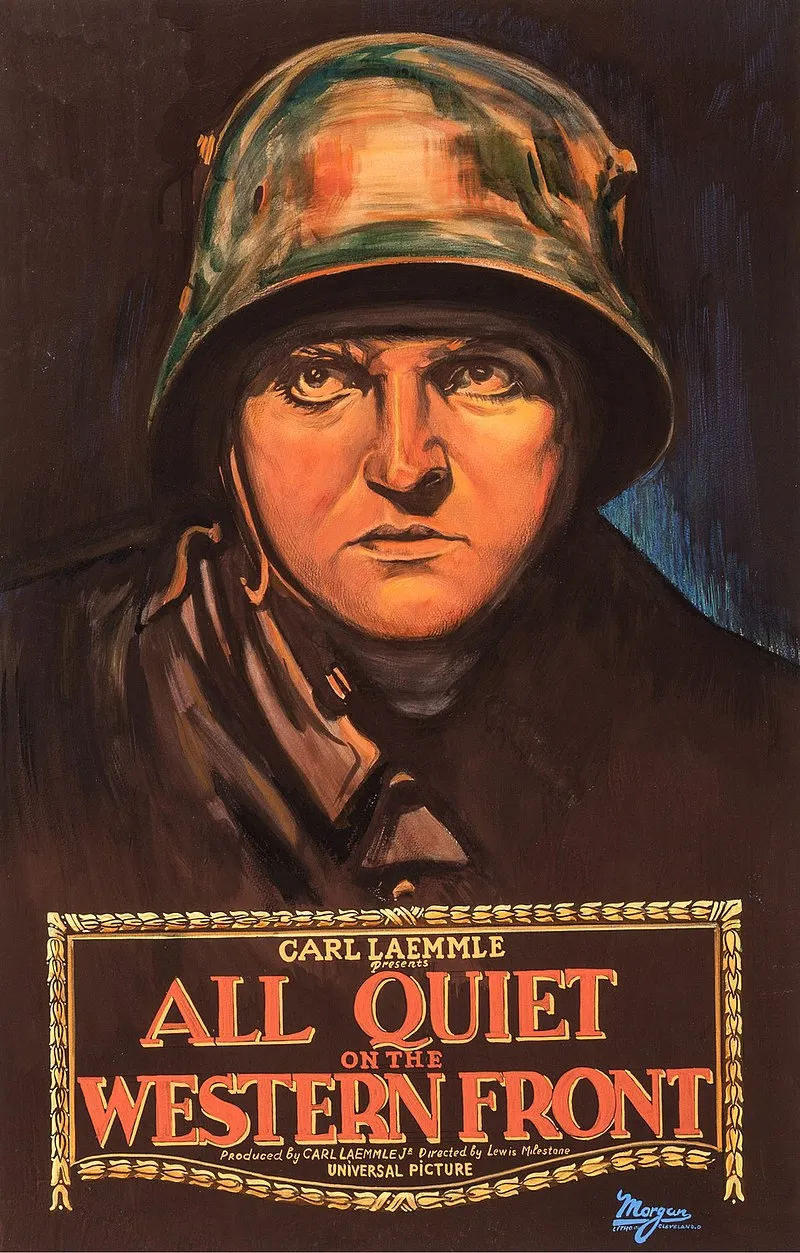
All Quiet on the Western Front is a 1930 German epic anti-war film based on the 1929 novel of the same name by Erich Maria Remarque. The 2022 version is the third film adaptation of the book, after the 1930 and 1979 versions. Directed by Edward Berger, it stars Felix Kammerer, Albrecht Schuch, Daniel Brühl, Sebastian Hülk, Aaron Hilmer, Edin Hasanovic, and Devid Striesow.
The film premiered at the Toronto International Film Festival on September 12, 2022, and was released to streaming on Netflix on October 28. It received positive reviews from critics, with praise directed towards its tone, cinematography, makeup, performances, musical scores, direction, and its faithfulness to the source material's anti-war message.
Plot
The film All Quiet on the Western Front follows the story of young German soldier Paul Bäumer and his friends Albert and Müller, who voluntarily enlist in the German army during World War I, driven by patriotic fervor. The movie portrays the initial excitement of war turning into desperation and fear as the soldiers fight for their lives in the trenches.
The story depicts the brutal realities of war, including the terrifying experiences and distress faced by the soldiers on the Western Front. The film also adds a parallel storyline not found in the book, which follows the armistice negotiations to end the war.
The narrative captures the dehumanization of World War I's trench warfare and the impact it has on the young soldiers. It shows the soldiers' disillusionment with the ideals of nationalism and patriotism for which they enlisted, as they realize the emptiness of these concepts in the face of the brutal realities of war. The film aims to provide a viewpoint of people who had never experienced or conceived of war and bloodshed on such a scale, emphasizing the grim reality of life in the trenches and the brutal nature of the weapons of war used during that time.
Watch For Free
@taskmaster4450le/re-leothreads-kywdutf9
If the video doesn't play on the browser, try another one. The videos work with Opera, Firefox, Chrome, and Edge. Some films take a bit to load so be patient.
Full Cast
- Felix Kammerer as Paul Bäumer
- Albrecht Schuch as Stanislaus "Kat" Katczinsky
- Aaron Hilmer as Albert Kropp
- Moritz Klaus as Franz Müller
- Adrian Grünewald as Ludwig Behm
- Edin Hasanovic as Tjaden Stackfleet
- Daniel Brühl as Matthias Erzberger
- Thibault de Montalembert as General Ferdinand Foch
- General Friedrichs
Director: Lewis Milestone
Writer: Erich Maria Remarque, George Abbott, Del Andrews, Maxwell Anderson, Maxwell Anderson, Lewis Milestone
Box Office Gross: No information
Distributor: Universal Pictures
Genre: War
Release Date (Theaters): Aug 24, 1930
Release Date (Streaming): Apr 22, 2014
Themes & Reception
The themes of All Quiet on the Western Front include anti-war sentiment, the dehumanization of soldiers in war, disillusionment with nationalism and patriotism, and the brutal realities of trench warfare during World War I.
The film has received positive reviews from critics, with praise for its tone, cinematography, makeup, performances, musical scores, direction, and faithfulness to the source material's anti-war message. However, some viewers have criticized the film's score for being too droning and lacking in melody.
The film was well-received and won the Academy Award for Best Picture in 1930. It is considered a classic in the war film genre and has had a lasting impact on cinema
Visual Styles & Techniques
The visual styles and techniques employed in All Quiet on the Western Front contribute to the film's immersive portrayal of the horrors of war. The cinematography, directed by James friend, has been praised for its stunning and immersive quality, capturing the darkness and brutality of war.
The film's visual approach includes the use of different cameras for various purposes, such as the Alexa 65 for capturing battlefield action, the Alexa Mini LF for navigating the narrow trenches, the Sony Venice for nighttime shots, and the red for explosive effects. These diverse camera setups aimed to create an authentic and documentary-like perception of the imagery, enhancing the film's realism.
Challenges Faced
The cinematographer, James Friend, emphasized the challenges of lighting the expansive battlefield scenes, describing it as a daunting task due to the sheer size of the space. Additionally, the film's immersive camera work has been highlighted as a key element that effectively captures the essence of the war film genre, contributing to the authenticity and impact of the storytelling.
Setting
The setting of All Quiet on the Western Front is the Western Front during World War I. The story revolves around the experiences of Paul Baumer and his comrades, who are soldiers in the German army.
The film portrays the brutal realities of trench warfare, the chaos of battle, and the horrors of war faced by the soldiers on the front lines. The setting serves as a backdrop to depict the dehumanizing and distressing nature of war, as well as the disillusionment experienced by the soldiers as they confront the grim and relentless challenges of combat.
Trailer
@taskmaster4450le/re-leothreads-umjh5pq1
